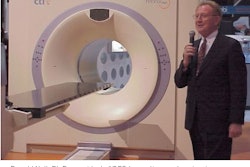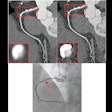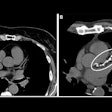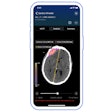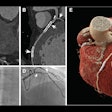CHICAGO - Doctors who work at a busy trauma center in Miami said plain x-ray films of the neck are unnecessary if the patients with multiple injuries receive a routine spiral CT scan upon admission.
“The C-spine series did not seem to lead to any additional relevant information, nor did it increase the diagnostic confidence of the radiologist in these polytrauma patients,” said Dr. Daniel Rozenberg, a resident in radiology at Jackson Memorial Hospital.
“For polytrauma patients who undergo CT scans of the cervical spine, we find no justification to continue to require plain-film series on a routine basis,” he said at his presentation at the Radiological Society of North America meeting.
Rozenberg and colleagues noted that when patients involved in motor vehicle accidents with multiple injuries are brought into the emergency room, they almost always receive a CT scan for possible injuries to the cervical spine. “Many of these people are in real bad shape,” he said. The patients also tend to receive a plain-film x-ray series of their spine as well, but doctors have questioned the utility of those films.
In his study, Rozenberg and colleagues looked at 116 polytrauma patients transported to the emergency room at his hospital in a three-month period. Doctors were instructed to make their diagnosis on the basis of the CT scans done when the patient was admitted. After their diagnostic impressions were recorded, the doctors then reviewed the plain films to determine if any changes in their diagnosis were necessary.
“Clinical impressions in these patients after seeing the plain films were virtually unchanged,” Rozenberg reported. “All previously seen injuries were confirmed. No other injuries were found. There was no change in the degree of confidence. There was no additional information in the two cases of indeterminate diagnosis.”
Rozenberg said that, based on the study, the hospital is now considering whether to cease performing plain-film cervical-spine series as a routine procedure.
Dr. Joshua Hirsch, professor of radiology at Harvard Medical School in Boston, commented that the findings, “would potentially be a wonderful socioeconomic study for radiology and the use of CT as opposed to plain films. I would encourage modeling this study in some way, because some of the assumption that plain film is cheaper might well be addressed by this finding.”
He suggested that if the films are not necessary as a routine procedure, substantial savings in technologists’ time and radiologists’ reading time could be achieved.
By Edward Susman
AuntMinnie.com
contributing writer
December
6, 2002
Copyright © 2002 AuntMinnie.com





